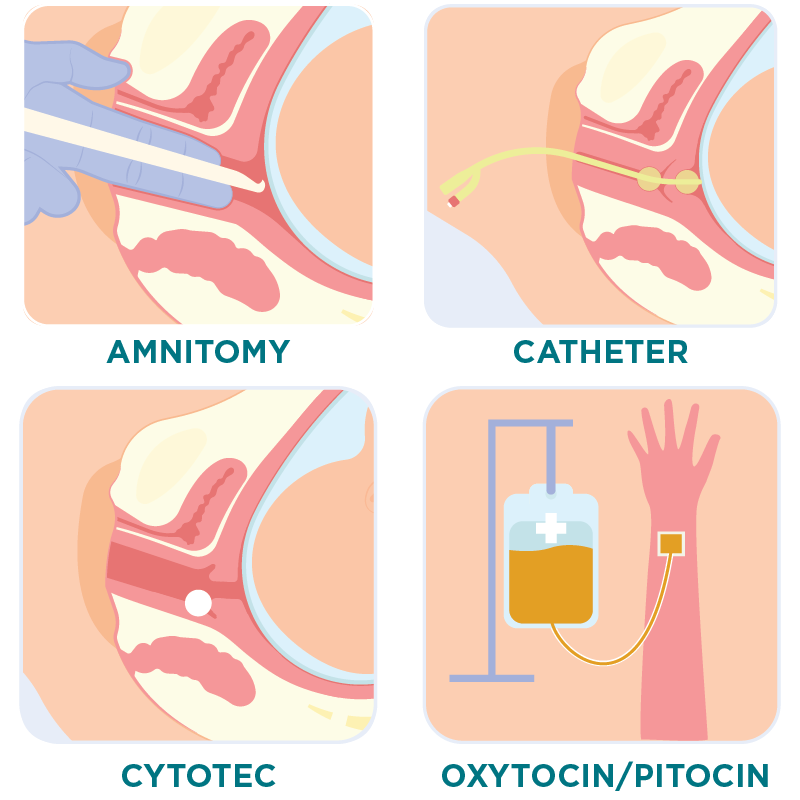
Labor Induction
What is Labor Induction?
Labor induction is the use of medications or other methods to induce (start) labor. The goal of induction is to help you have a vaginal birth. If you have had a prior C-section, induction is not an option at our facility.
Why is Labor Induced?
Labor induction may be recommended if the health of you or your baby is at risk. Some of the reasons for inducing labor include:
- Your pregnancy has lasted longer than 41 weeks
- You have health conditions such high blood pressure, heart disease, diabetes, preeclampsia, etc.
- You are in labor, but it is not progressing
- You have a past history of complications during childbirth
- There are problems with your baby such as slow growth
- There is a decrease in amniotic fluid around your baby
Ways to Induce Labor
 Your healthcare provider will help determine the best way to induce labor,
by examining you and checking your cervix. Ways to induce labor include:
Your healthcare provider will help determine the best way to induce labor,
by examining you and checking your cervix. Ways to induce labor include:
- Breaking your water (Amniotomy): If it is safe to do so, your healthcare provider can break your water (amniotic sac).
- Catheter: A small balloon is inserted into the cervix and filled with saline. This helps to soften and thin the cervix.
- Medication: Medication is used to soften, thin, and open the cervix to help the baby to pass through. There are a few different medications that can be used: Cytotec (pill taken by mouth), Cervidil (inserted vaginally), and Oxytocin/Pitocin (through an IV inserted into a vein).
Risks of Labor Induction
There are some risks with labor induction:
- Failed induction: If the above methods do not result in progression of labor after 24 hours, an alternative plan may be discussed with you by your healthcare provider to agree on what is safest for you and your baby.
- Abnormal range of your baby’s heart rate: Some medications used to induce labor can cause over stimulation of the uterus, making it to contract too often. This decreases your baby's oxygen supply and can lower it's heart rate. Your baby's heart rate and the strength of your contractions are consistently being monitored to ensure the safety of you and your baby.
- Infection: Causes of infection might be contributed to a long period of time between your water breaking and delivery of your baby.
Planning for Your Labor Induction
If you are scheduled for an induction with your healthcare provider, please know that this does not guarantee your admission for that day. Patients are to call the Labor & Delivery Charge nurse on the day of induction for availability and further detailed instructions.
